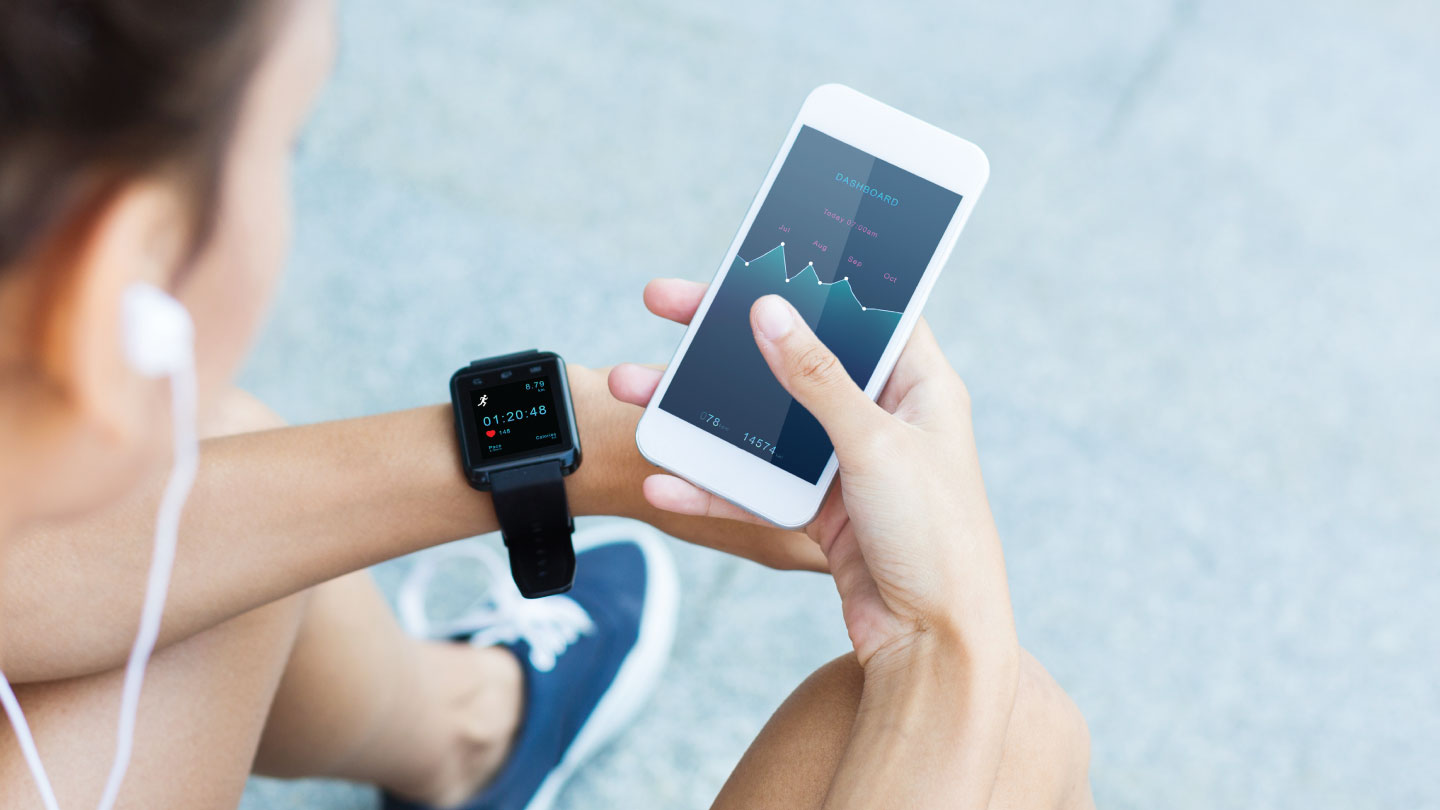Movement
Easy Strategies to Sit Less
Discover simple and effective strategies that help you move more. Sitting less can lower the risk of serious conditions like type 2 diabetes and heart disease.

Generally, office workers spend their day glued to their desks, typing away for hours on end, rarely leaving their workstations except for a quick lunch break.
While it might seem harmless, sitting for prolonged periods can lead to serious health issues like back pain, weight gain, and increased risk of chronic diseases.
Unlock insider access to the best movement plans for free! Sign up today.
A 2024 report by WHO states that nearly one-third (31 per cent) of adults worldwide, about 1.8 billion people, didn't meet the recommended physical activity levels in 2022. If this continues, inactivity levels could soar to 35 per cent by 2030.
Related story: The Hidden Costs of Sitting Too Much
Sitting Habits: How Much is Too Much?
Imagine a typical day for a working professional: hours spent hunched over a desk, commuting in a car or local train/metro, and then relaxing on the couch at home. It's normal to spend a big part of your day sitting. You sit during your commute, while eating meals, and at your desk in the office. When you get home, you may want to watch TV or scroll on your smartphone while lounging on the couch. It all adds up.
Of course, sitting isn't all bad. We need to sit sometimes to let our bodies rest and recover.
This sedentary lifestyle is too common and can be a silent health threat. The question is: how much is too much? Research shows that sitting for more than eight hours a day can increase the risk of serious health issues. A 2024 study issued in the journal Heart Foundation reveals that on average, adults spend more than half of their day sitting, which increases the risk of heart disease and Type 2 diabetes.
Related Story: The World's Greatest Stretch: Why Everyone Should Do It Everyday
Significance of All-Day Movement
Moving throughout the day, even with small actions like stretching, walking, or standing, keeps your metabolism active and supports overall health. For example, instead of emailing a colleague, walk over to their desk. Take a stroll after your lunch break instead of sitting at the cafeteria and conversing with colleagues. These simple habits not only reduce the risks associated with prolonged sitting, like heart disease and diabetes but also boost energy levels and improve mood.
- Boosts Circulation: Regular movement helps improve blood flow, reducing the risk of blood clots and improving overall circulation.
- Reduces Muscle Stiffness: Getting up and moving helps prevent stiffness and muscle cramps, especially if you’ve been sitting for a long time.
- Enhances Focus and Productivity: Short breaks for movement can refresh your mind, improve concentration, and boost productivity when you return to your tasks.
- Supports Weight Management: Frequent movement increases your daily calorie burn, aiding in weight management and reducing the risk of obesity.
- Lowers Risk of Chronic Diseases: Regular activity helps lower the risk of chronic conditions such as heart disease, type 2 diabetes, and certain cancers.
- Improves Mood and Energy Levels: Physical activity releases endorphins, which can enhance your mood and energy levels, helping you feel more alert and positive.
- Improves Posture in general: Standing up and stretching regularly can help correct poor posture and alleviate back and neck pain caused by prolonged sitting.
- Enhances Joint Health: Movement helps keep your joints flexible and reduces the risk of conditions like arthritis.
Related Story: 10 Minute Yoga Asana For Back Pain
7 Easy Strategies To Sit Less and Move More
So, next time if you find yourself sitting for more than two hours in a single stretch, it’s time to get moving! Following certain strategies religiously into your daily routine can lead to significant long-term health benefits.
1. Reduce your time on social media, TV, and phone: Spending too much time on social media, watching TV, or using your phone can contribute to a sedentary lifestyle. By reducing screen time, you free up more opportunities to be physically active throughout your day. For example, instead of scrolling through social media for an hour, you could use that time to go for a walk or engage in a hobby that involves movement.
2. Replace watching TV in the evening with taking a walk: Instead of spending your evenings watching TV, consider taking a walk. Walking after dinner, for example, not only helps in burning calories but also aids in digestion and promotes relaxation. It's a simple yet effective way to incorporate physical activity into your daily routine. A 30-minute walk can significantly contribute to meeting your daily activity recommendations and improve overall health.
3. Stand while reading or checking messages on your phone: Whether reading a newspaper or checking messages on your phone, standing rather than sitting can make a difference. Standing encourages better posture, reduces the strain on your back and neck, and increases calorie expenditure compared to sitting. For instance, you can stand at a kitchen counter or a high table while reading news articles or responding to messages on your phone.
4. Take a movement-break every 30 minutes to stand and stretch: Stretching is essential for combating the negative effects of prolonged sitting. Sitting for extended periods can lead to muscle stiffness, decreased circulation, and even metabolic issues. Setting an alarm on your phone or watch to remind you to stand up and stretch helps break up prolonged periods of sitting, improves blood flow, and reduces the risk of musculoskeletal problems.
5. Stand up for simple tasks at work, like a phone call or a brief meeting: It is better to stand for easy tasks at work, such as phone calls or short meetings, to reduce overall sitting time. Standing up periodically throughout the day not only burns more calories than sitting but also improves focus and productivity. Using a headset for phone calls or scheduling stand-up meetings are practical ways to incorporate standing into your daily work routine.
6. Consider using a sit-stand workstation: A sit-stand workstation allows you to alternate between sitting and standing throughout the workday. This variation in posture helps prevent the negative health effects associated with prolonged sitting, such as obesity, cardiovascular disease, and musculoskeletal disorders. Adjustable desks or desk converters are available options to create a more ergonomic and active workspace.
7. Walk around or do housework during TV commercial breaks: During TV commercial breaks, it's beneficial to get up and move around. For instance, you could use the time to walk around your house, do some light stretching, or complete small household tasks like folding laundry or dusting.
Making small changes to incorporate more movement throughout your day can have profound effects on your health and well-being. Whether it's limiting screen time, taking breaks during TV viewing, or opting for manual tasks, these actions contribute to reducing sedentary behavior and promoting physical activity. Incorporating these habits into your daily life can have significant benefits for your physical health, mental well-being, and overall quality of life. By reducing sedentary behavior and increasing physical activity, you can improve your fitness levels, prevent chronic diseases, and maintain mobility as you age.
Related Story: 7 Moves To Relieve Stiffness From Sitting All Day
Unlock insider access to the best movement plans for free! Sign up today.
EXPLORE MORE
Instead of chasing long workouts, micro-movement shifts the focus from “Did I work out today?” to “Did I move often enough today?”
Pressed for time but craving results? These high-impact exercises burn maximum calories in minimum time, when done right.
Simple, practical fitness advice to help you feel stronger, healthier, and more consistent in 2026.
Callisthenics isn’t about flashy Instagram moves or avoiding the gym. According to celebrity fitness and lifestyle coach Krishna Sadvale, it’s one of the most practical ways to build strength, control, and confidence in your own body.






.jpg)

.jpg)
.jpg)
